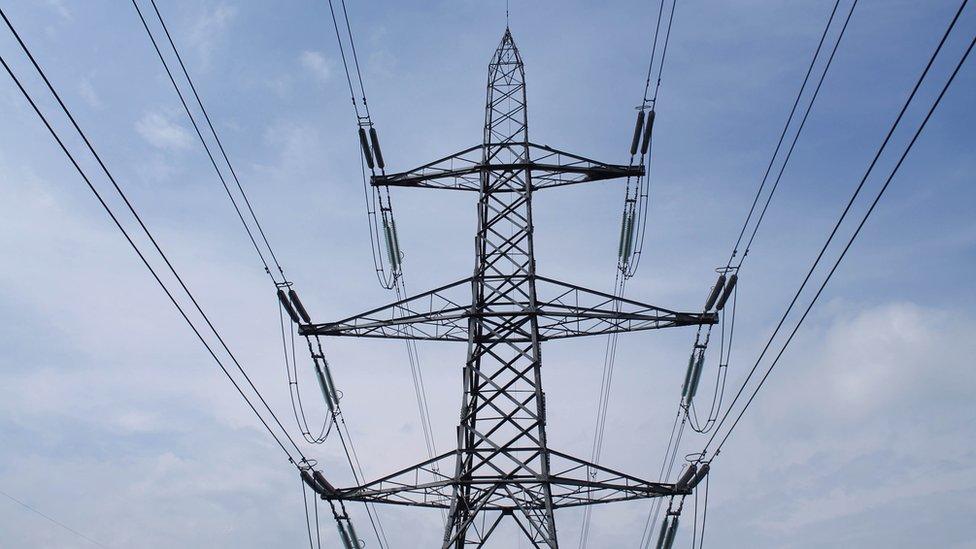New Norwich to Tilbury pylon consultation set to start
- Published
- comments

National Grid is finalising the route to carry electricity from off-shore windfarms to London
The third and final public consultation into plans for a new line of pylons between Norwich and the Thames coast is getting under way.
National Grid is finalising the route to carry electricity from off-shore windfarms to London.
The company has agreed to bury more of the cabling underground but insists pylons still make economic sense.
Residents living along the route claim the company is not listening to their concerns.
Norwich to Tilbury is one of 17 proposed projects across England and Wales to upgrade the transmission network.
The government says it will allow Britain to generate more of its own green energy and should, over time, lead to a reduction in bills.
But there have been widespread protests along the proposed route from residents and local politicians worried about the impact of new pylons and electricity substations on the countryside.
National Grid says it has listened to local concerns.
As well as previously agreeing to cable under Dedham Vale in Essex, it is now also proposing a 0.9 mile (1.5km) underground alternative through the Waveney Valley to the west of Diss and to lay fewer cables on the approach to the substation at Bramford in Suffolk.
It has also moved the location of some of the pylons along the route.
"The government's national policy statement sees overhead power lines as a starting assumption," said Liam Walker, the policy director for National Grid.
"However, from the feedback we've received we've been able to make some changes.
"This [new] consultation is a really important stage in the project where we'll be able to consider further feedback to shape our proposals and we want people to take part."
'Really furious'
But Rosie Pearson, from the campaign group Pylons East Anglia, described the consultation as "a joke".
"People are going to be really furious," she said, "because we know that National Grid has ignored 28,000 people who signed a petition along with all the councils, parish councils and all the MPs.
"When they see the maps in the consultation set out where the pylons will be in relation to their homes and their farms, and when they see the access roads, the lorry compounds and the substations, it's going to be much, much more real than it has been in the past few years."
Campaigners are keen for most of the cabling to be out at sea. But a recent report found that this would be more expensive and take longer to complete the work.
National Grid is holding 14 public information events along with webinars and poster displays over the next 10 weeks.
It then plans to submit a planning application next year with government expected to make a final decision in 2026 with construction work starting in 2027.

Follow East of England news on Facebook, external, Instagram, external and X, external. Got a story? Email eastofenglandnews@bbc.co.uk , externalor WhatsApp 0800 169 1830
Related topics
- Published23 June 2023

- Published26 November 2023

- Published19 March 2024
